Table of Contents
- FREE 5+ Single Subject Research Templates in PDF
- 1. Single Subject Research Template
- 2. Single Subject Research Format
- 3. Single Subject Research Design Template
- 4. Single Subject Research Design in PDF
- 5. Single Subject Research Sample
- 6. Single Subject Research Checklist Template
- What is Single-Subject Research?
- What Are the Assumptions of a Single-Subject Research?
- Elements of a Single-Subject Research
FREE 5+ Single Subject Research Templates in PDF
Single-subject research refers to a category of methodologies that are commonly used with both human and non-human subjects in the experimental study of behavior and applied conduct analysis. A-B-A-B models, multi-element models, multiple reference models, repeated acquisition models, short test models and integrated designs are the main methods in this type of research.

FREE 5+ Single Subject Research Templates in PDF
1. Single Subject Research Template
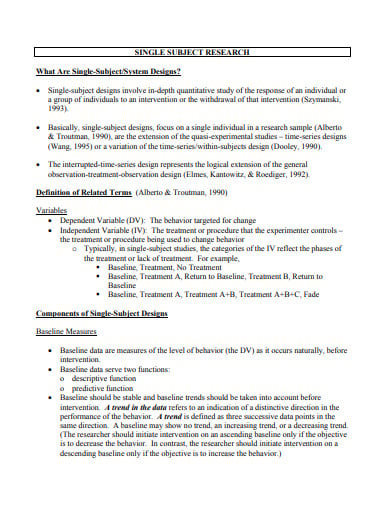 courses.phhp.ufl.edu
courses.phhp.ufl.edu2. Single Subject Research Format
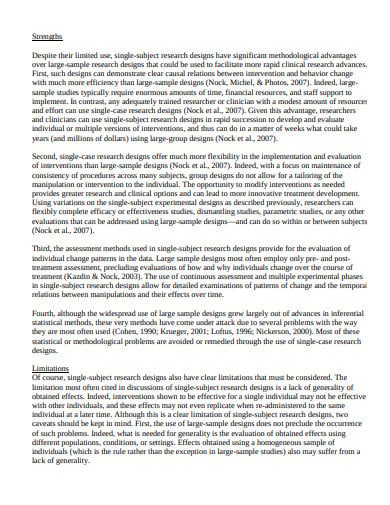 reginfo.gov
reginfo.gov3. Single Subject Research Design Template
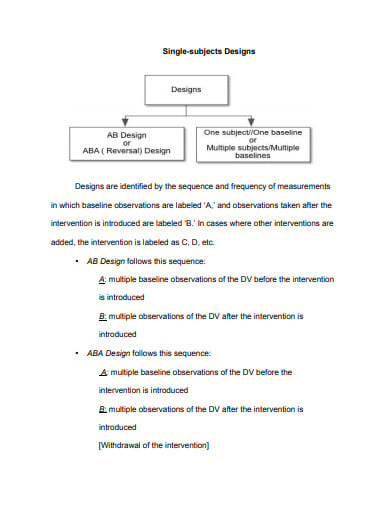 media.usm.maine.edu
media.usm.maine.edu4. Single Subject Research Design in PDF
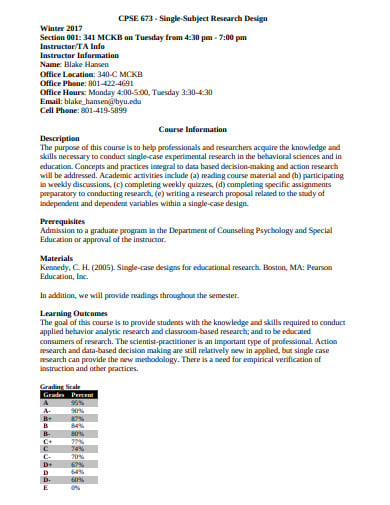 education.byu.edu
education.byu.edu5. Single Subject Research Sample
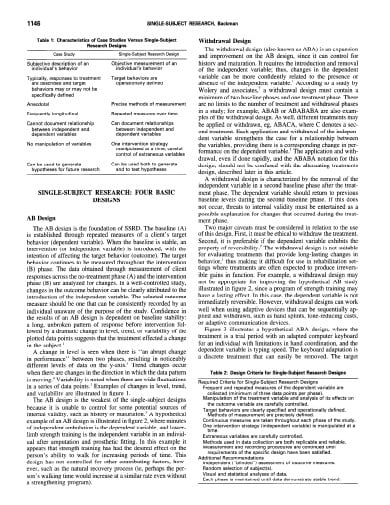 archives-pmr.org
archives-pmr.org6. Single Subject Research Checklist Template
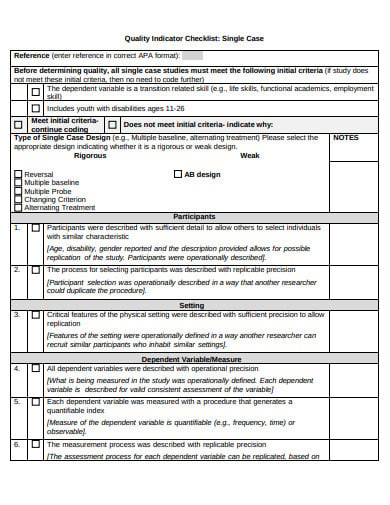 transitionta.org
transitionta.orgWhat is Single-Subject Research?
Single-subject research refers to a form of quantitative research requiring a thorough study of each one of a limited proportion of participants’ behaviors. Keep in mind that the word ‘single-subject’ does not indicate that only one individual is being examined; it is more common for two to ten subjects to be present. That is why the single-subject study designs are sometimes called small-n designs, where n is the sample size statistical symbol. The single-subject study may even be compared to group study as it generally includes observing huge numbers of people and analyzing their behavior mainly in terms of group measures, standard deviations, etc.
It is essential to differentiate between single-subject research and two other methods which include a small number of participants studying in detail. One is a qualitative study that relies on recognizing the subjective experience of individuals by gathering fairly unstructured data (such as extensive interviews) and evaluating that data using narrative instead of quantitative strategies.
In comparison, single-subject research focuses on recognizing objective behavior with the help of experimental control and manipulation, gathering highly-structured data and quantitatively evaluating those data. Distinguishing single-subject study from case studies also is significant. A case study is an individual’s detailed description which may include both quantitative and qualitative analyses.
What Are the Assumptions of a Single-Subject Research?
Single-subject research includes observing a limited number of respondents and concentrating closely on each one’s behavior. But why should you take that approach rather than approaching the group? Many major assumptions are driving single-subject analysis;
The first presumption is that an intense emphasis on the actions of the individual participants is necessary. One explanation for this is that group study can mask individual differences and produce findings that do not reflect any individual’s behavior. For instance, a medication that has a positive impact on half of the people it is administered to but a negative effect for the other half would seem to not affect whatsoever on average.
Nevertheless, the single-subject study will probably reveal certain differences between individuals. A second cause to concentrate closely on subjects is that sometimes it is a particular subject’s conduct which is of primary interest. For instance, a school psychologist might be open to changing a specific troublesome student’s behavior.
The second assumption of single-subject research is that the exploration of causal relationships is important through the manipulation of an independent variable, careful calculation of a dependent variable, and monitoring of international variables. The single-subject study is, therefore, also considered a type of experimental research with good internal validity.
For instance, Hall and his associates have evaluated their dependent factor several times — first under a state of no-treatment control, then under a condition of treatment, and then again below the state of control. As when the drug was implemented, there was a significant rise in testing, a decrease when it was withdrawn and an increase when it was reintroduced, there is little question that the medication was the cause of the change.
Single-subject research has a third assumption which states that studying strong and consistent effects that are of biological or social significance, is significant. Above all, applied researchers are interested in interventions that have significant effects on critical behaviors and can be incorporated effectively in the real-world environments in which they occur. Often, this is called social validity.
For example, Hall’s research and his colleagues had good social validity as it demonstrated clear and strong effects of constructive teacher intervention on a behavior that is important to teachers, parents, and students. The teachers have considered the procedure to be easy to implement, even in their frequently-chaotic elementary school environments.
Elements of a Single-Subject Research
Experimental Questions
Experimental issues are critical in deciding the complexity of the design to be chosen for the experiment. Experimental questions have four basic types: for instance, contrast, parametric, and part. “Does A cause or impact B?” is a demonstration. contrast is “Causes or affects B more by A1 or A2?” A parametric question is, “How much of A will affect or change B?.”
A-B-A-B Design
The configuration of the A-B-A-B is useful for questions regarding demonstrations.
A-B
The AB design is a two-part or step design consisting of an unchanged baseline (“A” phase) and a treatment or intervention (“B”) phase. If a change occurs then the procedure could be said to have had an impact. It’s prone to several potential competing theories which makes it difficult to draw strong conclusions. The AB architecture variants add ways of controlling the competing theories to allow for stronger conclusions.
Reversal or A-B-A
One of the most effective designs of single-subject research is the reversal design. It aims to show a strong reversal from baseline (“A”) to care (“B”) and back again. If the parameter resumes without medication to the baseline test and restores its results when reapplied, the researcher may have greater confidence in the success of that procedure.
A-B-C
The A-B-C architecture is a model that enables research questions to be broadened across variable, parametric and comparative issues.
Multi-element Design
Multi-element structures or alternating-treatment models are sometimes used to assess the comparative impact of two therapies. Throughout rapid succession, two therapies are alternated, and associated shifts are displayed on a graph to enable correlation.
Multiple Baseline Design
The multiple baseline design as used in basic operant research was first recorded in 1960. It was applied to human studies in the late 1960’s in reaction to functional and ethical issues that arose from the successful elimination of procedures from human subjects. Two or more habits (often three) are shown in it, individuals or environments in a phased graph where an adjustment is made to one, but not to the other two, and then to the second, but not the third action, individual or environment. Variable shifts arising in each behavior, individual or environment tend to illustrate what is an AB system with its troublesome competing hypotheses.






